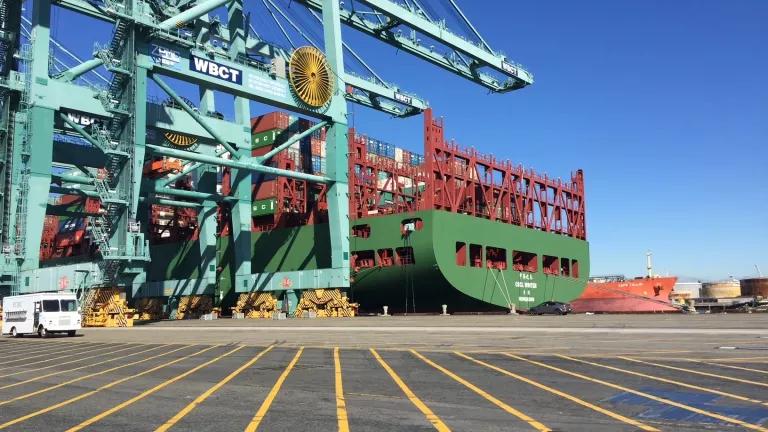This post was co-written with my colleagues Christine Xu and Jake Schmidt.
While many Beijing residents have long voiced concern and discontent over air pollution levels, it took possibly the worst air pollution in recent history to get the government to acknowledge the problem. On Saturday, January 12, air pollution levels in Beijing broke records: PM 2.5 – the fine particles that gets lodged in the lungs — spiked to 886 while the Air Quality Index (AQI) climbed to 755. These readings are based on the US Embassy’s air monitor in Beijing, since Chinese monitors stop recording at 500. According to the US EPA, readings between 301-500 are considered “hazardous,” so China’s chart-shattering numbers could only be labeled as “beyond index.” To put these numbers into context, an environmental law expert reported that the closest the US has come to these levels is during forest fires, and Beijing’s level is even higher than that. Air pollution at these levels has enormous public health impacts that are clear evidence that China needs to take more aggressive steps to curb air pollution from coal, cars and factories.

Photo taken in Beijing on Sunday, January 13, 2013
The government has blamed the crisis on a combination of factors, such as burning more coal due to this year’s extra-cold winter, consecutive windless days, increasing number of cars, and factories in neighboring provinces. It has publicly advised residents to stay indoors, cancelled dozens of flights due to low visibility, ordered cars off the road, and shut down factories. By Sunday, even the state-run media that usually avoids criticizing the government ran front-page editorials about the crisis and demanded solutions. Vice Premier Li Keqiang said: "Pollution is not a problem that emerged only a few days ago - it's a long-term issue, and fixing it will take a long time. But we need to do something about it," including changes in industrial production and consumption patterns.
While publically acknowledging the problem is a welcome change from the government, it must move past acknowledgement and short-term solutions to prevention and strengthening environmental regulations. Our former colleague, Alex Wang, noted that the government has done more in disclosing the problem to the public and acknowledging the severity of the issue, but that “what remains to be seen is whether more aggressive action will be taken to solve the problem.” (See our other colleagues’ blogs here and here.)
NRDC and our partner, the Institute of Public and Environmental Affairs (IPE), have released three editions of a Pollution Information Transparency Index which ranks Chinese cities according to the accessibility of their environmental pollution data, including air pollution. The 2011 assessment results (the 2012 results will be published shortly) show that standards for environmental transparency within the 113 cities have overall been on the rise and that an initial system of environmental disclosure has been established, but it is still in its infancy.
NRDC has long been working to protect both environmental and human health in the US, China, and around the world. We have been working in mainland China for nearly two decades to combat air pollution through increasing energy efficiency, strengthening the rule of law and advocating for renewable energy. We have just launched a new project designed to engage Chinese government officials, NGOs, thought leaders and the public on the need to control coal consumption, the major source of China’s choking air pollution.
Hopefully this crisis will serve as a catalyst for the government of China to seriously examine the issues and find solutions that create a lasting impact on air pollution reduction.


